I have been getting a lot of questions about baby carriers lately. That doesn’t come as a surprise to me considering I had my baby strapped on me since day one. Baby carriers have many benefits, from strengthening the bond with your baby to helping it with its posture.
Some babies need help when it comes to good posture development, so that is why I am going to go over the best baby carrier for hip dysplasia.
a quick look at my favorite carriers for hip dysplasia
| Image | Product | Features | Price |
|---|---|---|---|
Best Budget Option  | 9.7 | Check Price On Amazon | |
Best Ergonomic  | 9.5 | Check Price On Amazon | |
Best Mid-Range  | 9.1 | Check Price On Amazon | |
Best Material  | 8.8 | Check Price On Amazon | |
Best Overall  | 8.6 | Check Price On Amazon |
Main Points
- Hip dysplasia is common among newborns.
- It can accrue in the womb, during, or after birth.
- Most cases of hip dysplasia can be treated fairly easily.
- Regular doctor checkups are very important for keeping track of your infant’s mental and physical development.
- The baby carrier you should buy is the one that kips your baby’s legs in an M-shaped position.
5 Best Baby carriers for developmental dyspepsia
As I mentioned, the best position for proper hip development is if your baby’s legs form the letter M. This means that the knees will bend slightly above the hips, even though it’s okay even if the knees go a little below the hips sometimes. Here is a list of the best baby carriers on the market today.
5. KeaBabies Baby Wrap Carrier – Best Budget Option
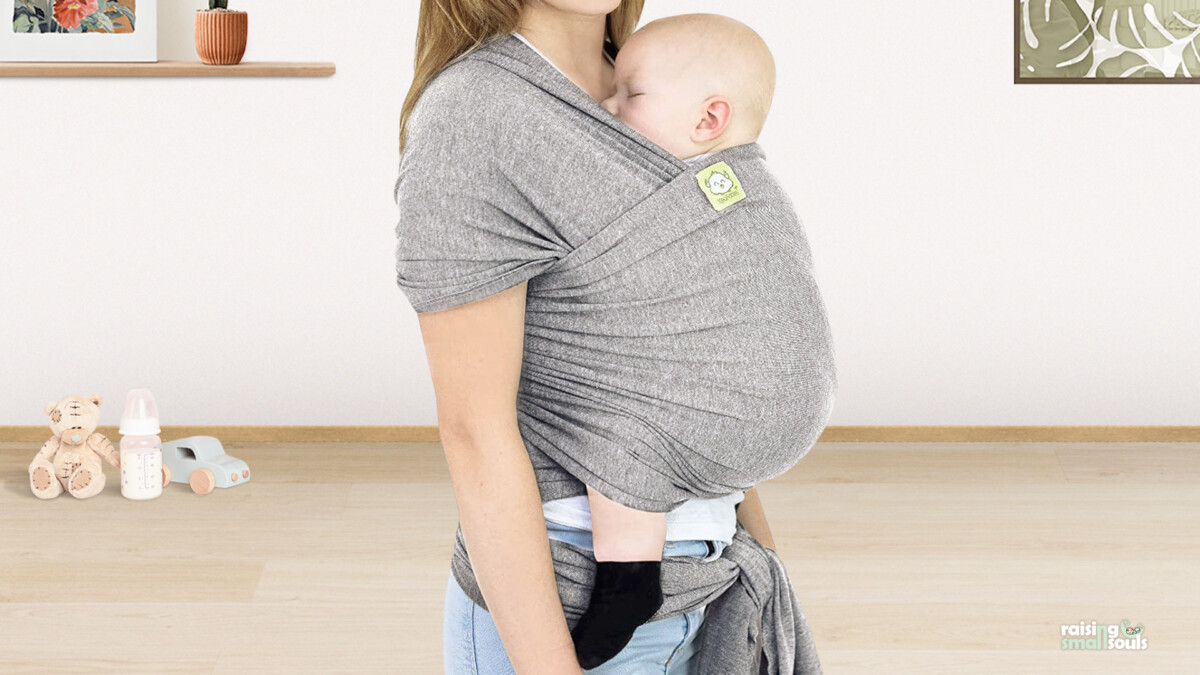
General overview
This model of baby carrier is most suitable for infants. This is the kind of baby carrier I used ever since I and my baby were out of the hospital.
KeaBabies Baby Wrap Carrier is designed to evenly distribute the weight in your shoulders and back so that you don’t feel any pain.
It is made from a cotton blend so it’s both soft and stretchy. It is very versatile and it can fit all sizes from petite to extra-large so anyone can wear it.
It creates a warm and cozy environment for your baby and helps in developing a strong parent-baby bond.
What Makes It Good
It is approved by the Hip Dysplasia Institute (IHDI) so you can rest assured that your baby will have the right posture. Plus, it comes in multiple colors so you can be practical and stylish.
What Makes It Bad
It can be difficult to figure out how to tie it especially if it’s your first time using a baby career like this. Make sure to follow the instructions or watch the instruction video.
Why Should You Buy It?
If you are looking for a decent-looking and solid-quality baby carrier that comes at a really affordable price, then the KeaBabies Baby Wrap would be your ideal choice.
Also Read: 5 Fantastic Baby Carriers for Breastfeeding
4. Ergobaby Omni 360 All-Position Baby Carrier – Most Ergonomic
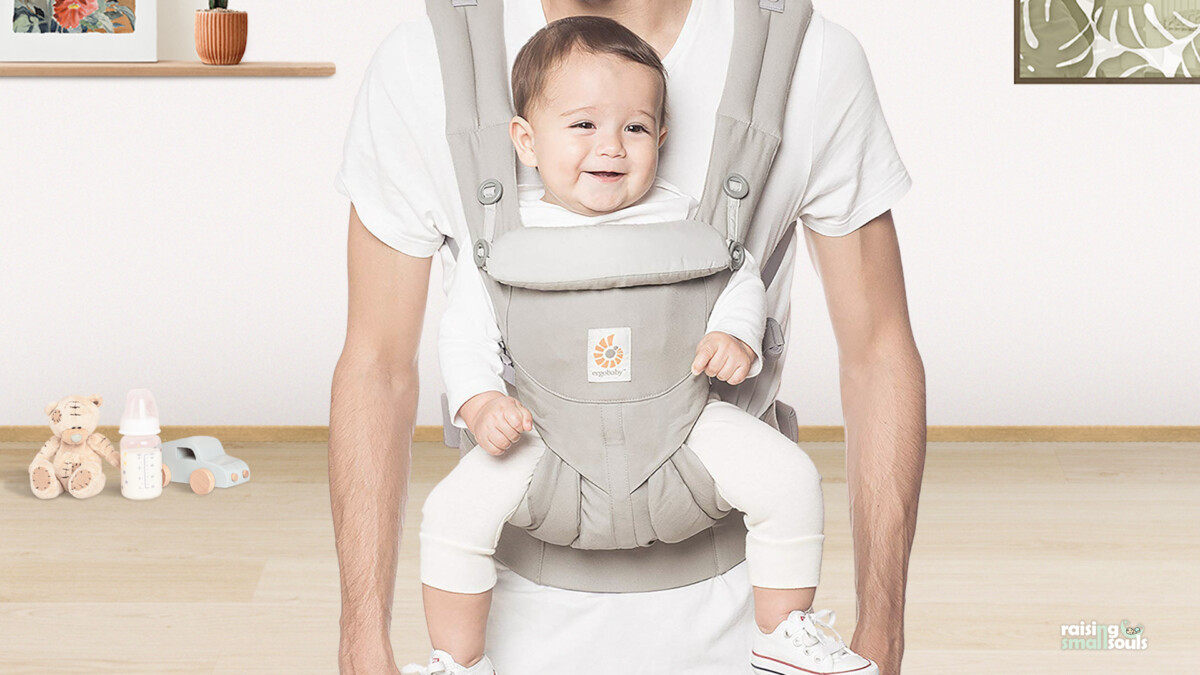
General overview
This baby carrier is designed for both infants and toddlers. The seat is adjustable so you can set it depending on the size of your baby.
It has 4 carrying positions, on the front with your baby facing towards you or away from you, on the hip, or on the back. Due to its versatility, it can fit parents of all sizes.
It has a hood for protection and you can even adjust the straps to be able to breastfeed while you are on the go. It’s made from 100% cotton, meaning that the fabric is soft and breathable all around.
A handy feature this carrier has is a removable storage pouch that you can use to put your phone and keys in.
What Makes It Good
You don’t have to buy multiple baby carriers for when your baby gets bigger and both the mother and father can wear it due to its adjustability.
What Makes It Bad
This model is more on the pricy side.
Why Should You Buy It?
The Ergobaby Omni 360 All-Position is a relatively expensive baby carrier. Nonetheless, it doesn’t fail to deliver in any aspect be it ergonomics, design, quality, or features.
3. Infantino Carry On Carrier – Best Midrange
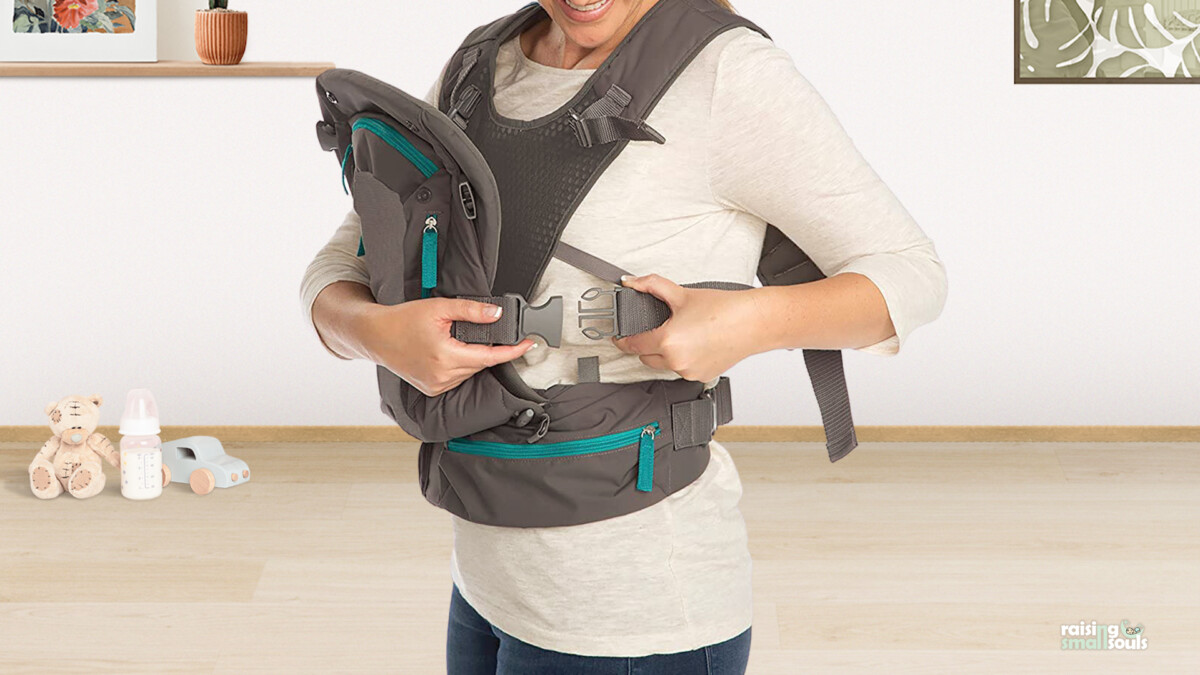
General overview
This is another adjustable model that reminds us of a backpack, and it can also serve as one thanks to its storage areas.
The Infantino Carry On Carrier has three supporting positions, around the shoulders, around the waste, and an extra strap under the armpits.
All the straps help distribute the weight of your baby which prevents back pain. This model also has 2 seat positions, a narrow and a wide. I recommend you use the wide seat position for infants to help with hip dysplasia.
What Makes It Good
It has 6 pockets located conveniently within arm’s reach that you can use to put all your stuff in without having to carry an extra bag.
What Makes It Bad
This model has a sporty design that not all parents will be fond of.
Why Should You Buy It?
The Infantino Carry On packs incredible adjustability which allows for support around the shoulders and other parts of the body to avoid any discomfort.
2. Infantino Cuddle Up Carrier – Best Material
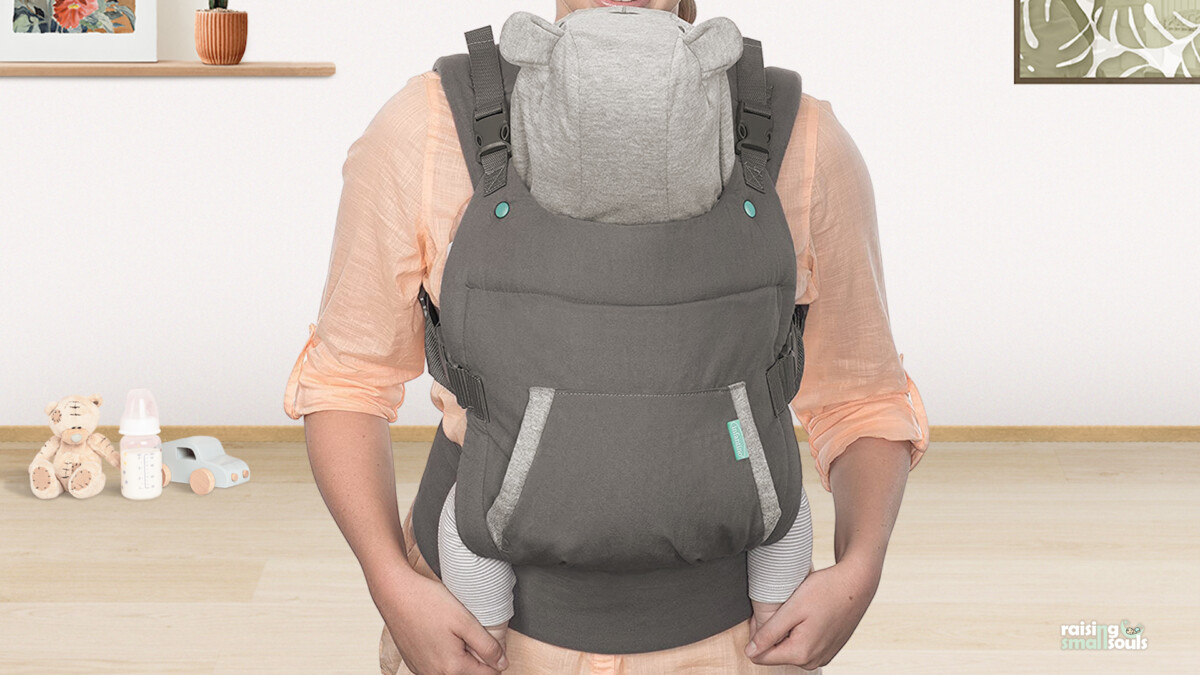
General overview
This model of baby carrier is extra cozy and provides maximum comfort for you and your newborn.
It is made from thick material to keep your baby warm and cozy and it has thick straps that will prevent rope burn and back pain for the parents.
This is probably the cutest carrier on the list because it has a detachable canopy hood with animal ears that not only protects the baby’s head, but looks adorable.
What Makes It Good
The Infantino Cuddle Up Carrier is suitable for colder weather. It will keep your baby warm and the hood provides extra protection.
What Makes It Bad
This model is generally meant for smaller babies even though it can withstand 40 pounds of weight.
Why Should You Buy It?
From my personal experience, I like this baby carrier due to the fact that it boasts an incredibly good quality which is thick, and it keeps your baby warm and cozy all the time.
1. Boba 4GS & Boba Mini – Best Overall
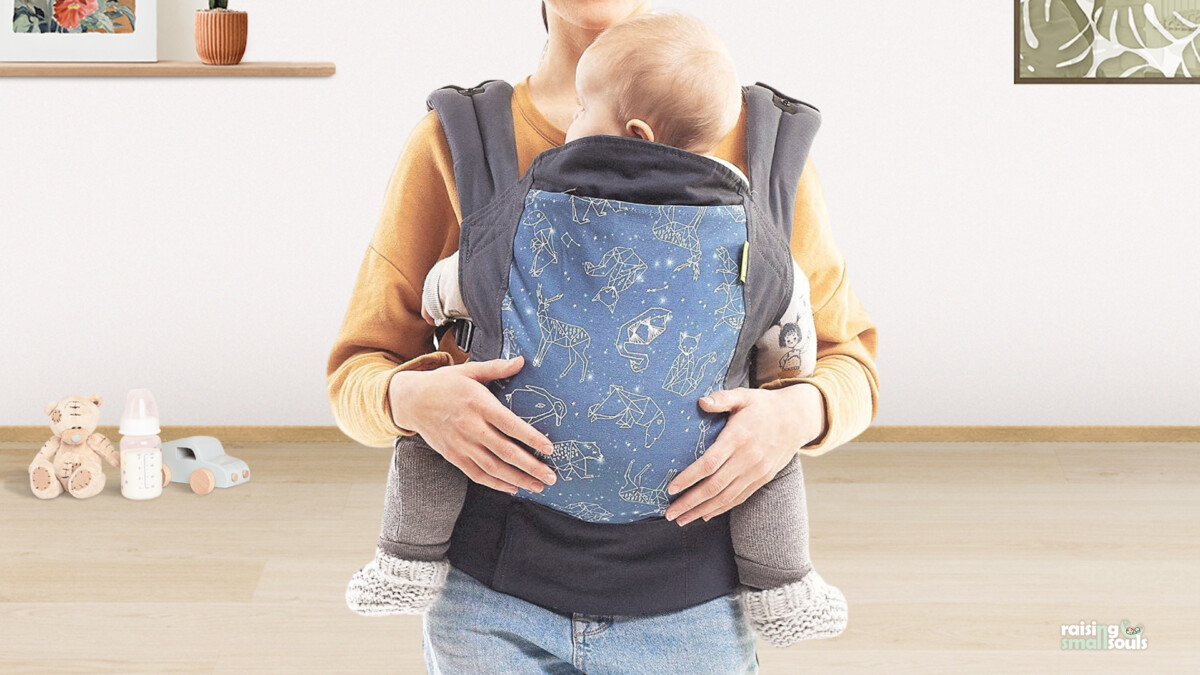
General overview
We are talking about 2 baby carriers here! The Boba 4GS is made from 100% cotton and it’s lightweight and intuitive. It can be worn on the front or back and it has thick soft straps that make you more comfortable.
It’s easy to spot clean when accidents happen and it’s also completely washing machine safe. It comes with mutable storage compartments including a purse strap holder and a front-facing phone pocket with a zipper.
Probably the best part about this carries is that it comes with a smaller version that you can give to your older kid so that it can carry its toy just like you carry your baby.
What Makes It Good
It comes in multiple designs so that you and your child can be fashionable. It is also a small business so you’ll be supporting someone’s dream.
What Makes It Bad
The straps can be too wide and bulky for some.
Why Should You Buy It?
The Boba4GS is the best overall in my opinion. I like everything about it starting from the 100% cotton material and the lightweight design.
Also Read: 5 Fantastic Baby Carriers for Back Pain
Buying Guide/Additional Information
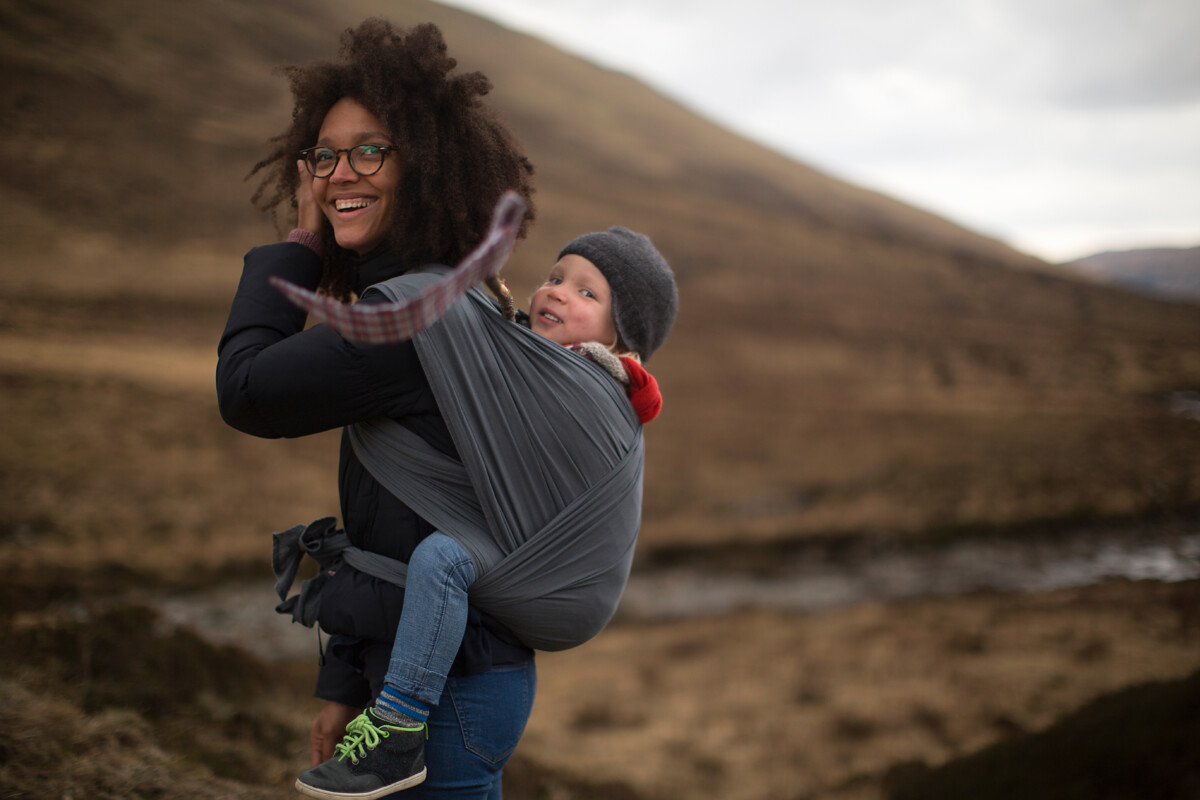
Hip dysplasia in babies
Hip dysplasia, also known as developmental dysplasia, is a condition where the hip joint doesn’t form properly.
The hip joint is a ball and socket joint, this means that the head of the femur (the thigh bone), fits in the cup-shaped hip socket. The hip joint allows for more rotation and that’s why our hips tend to have more movement and be more flexible than other parts of our bodies.
Take your knees for example. They are connected with a hinge joint, and as the name suggests, they can only do hinge movements (flexion and extension). The ball and socket joints allow for rotation movements and they are, anatomically speaking more complex.
Hip dysplasia is when the hip socket isn’t deep enough and the head of the femur can’t fit all the way in, making the joint loose and unstable.
Whom can it affect?
Anyone can have hip dyspepsia. However, it’s most common in babies. Baby girls have a bigger chance of having problems with developmental dysplasia because their hips are usually wider than boys’ hips.
Also, the chances of your firstborn having hip problems are bigger than with your other children. This is because the womb is still small and there is limited space for your baby to move, leading to possible improper hip joint development.
Hip problems can also be inherited. If the parents had childhood hip problems, there is a bigger chance that the baby will also have issues.
Hip dyspepsia isn’t always formed in the womb, sometimes it can happen during birth. If the baby is born in the breech position after the 28th week of pregnancy, this can play a role in developing hip issues.
The breech position means that the baby starts to come out with its legs down instead of its head. Hip displacement may arise while the doctor slowly pulls on the baby’s legs during birth.
Also having your baby’s legs swaddled tightly after birth can cause narrowing of the hips which can lead to the head of the femur not fitting in the hip socket properly.
Is it dangerous?
Hip dysplasia can be treated both at home or in the hospital. Depending on the severity of the condition your doctor may advise you to simply purchase the best baby carrier for hip dysplasia, or recommend treatment with physical therapy.
Some severe cases require surgery, but those cases are fairly rare. Most common cases of untreated hip dyspepsia result in limping and pain. Sometimes it can lead to osteoarthritis which is the most common type of arthritis.
How to know if my baby has hip dyspepsia?
The best to find out does your baby have hip dysplasia or not is by regular doctor appointments. Your pediatrician keeps a close eye on both your baby’s physical and mental development.
Sings of hip dysplasia that are easier to spot at home are uneven legs, turning off one foot, and the skin around the hips.
If one leg is longer than the other then this may be due to hip problems, also another pointing sign can be the foot pointing to the side. And last, check the skin around the groin area, if it creases more on one side than the other this may also be a sign.
Make sure that you consult your doctor before coming to any conclusions on your own. Also, make sure you have the green light from a professional before you start any kind of treatment.
How to treat hip dysplasia?
Your doctor should be the one recommending treatment for hip dyspepsia. Depending on the severity of the condition, your doctor might tell you that your baby has to wear a Pavlik harness.
Also, keep in mind how you swaddle your baby. If your baby’s legs are pressed tightly together, this may cause issues in proper hip development.
The best position for your baby’s hips is if the legs form the shape M, and I will tell you exactly how to achieve this position.
Frequently asked questions
How do you hold a baby with hip dysplasia?
I already talked about how the optimal position for a baby with hip dyspepsia is when its legs form the letter M.
This might be easy to pull off what a baby carrier, and since we already covered some of the best baby carriers for hip dysplasia, let’s talk about how to hold your baby.
The optimal position would be the sated straddle. Place your baby on your knee or thigh, let its legs fall to the side, and hold it under its armpits with your hands. If you want to breastfeed your baby in this position just push your torso closer to your knees while sitting down.
How common is hip dysplasia in babies?
I mentioned that dip dysplasia is a common condition, but let’s get a little specific. Studies have shown that one 1 every 1 000 babies has developmental dyspepsia to some extent.
This number varies depending on genetic factors and the week of the pregnancy the baby was born.
Is hip dysplasia a disability in babies?
Hip dysplasia can be a serious issue if not treated in time. That’s why early on in this article I recommended regular doctor checkups. It is not considered to be a disability in babies and it can often be fixed with a soft brace or cast.
A baby’s hips are very flexible so they are more prone to manipulation than adult hips, that’s why hip dysplasia in adults can be viewed as a disability and be harder to treat.
Conclusion
When people ask me for the best baby carrier for hip dysplasia I usually show them this list. Which specific model you choose is totally up to you. You can check with the manufacturer if the product is approved by the Hip Dysplasia Institute (IHDI) just to make sure you are making the right choice for your baby’s well-being.
If you see some of the signs of hip dysplasia that we talked about, like the legs being different lengths, don’t panic. Schedule an appointment with your doctor and listen to the instructions the medical professional gives you.
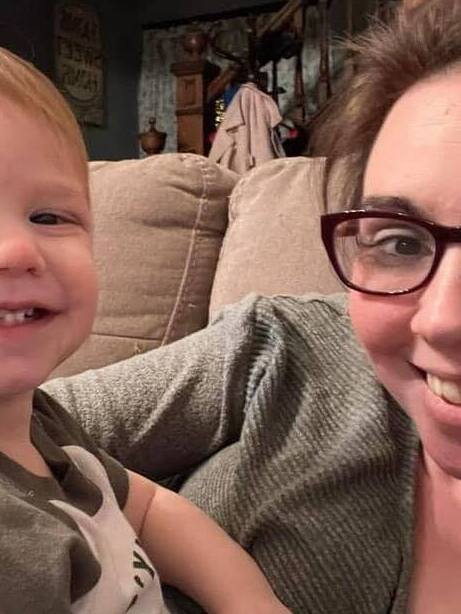
When it comes to raising children, there’s a lot to learn! I’m here to share everything i learnt along the way.
